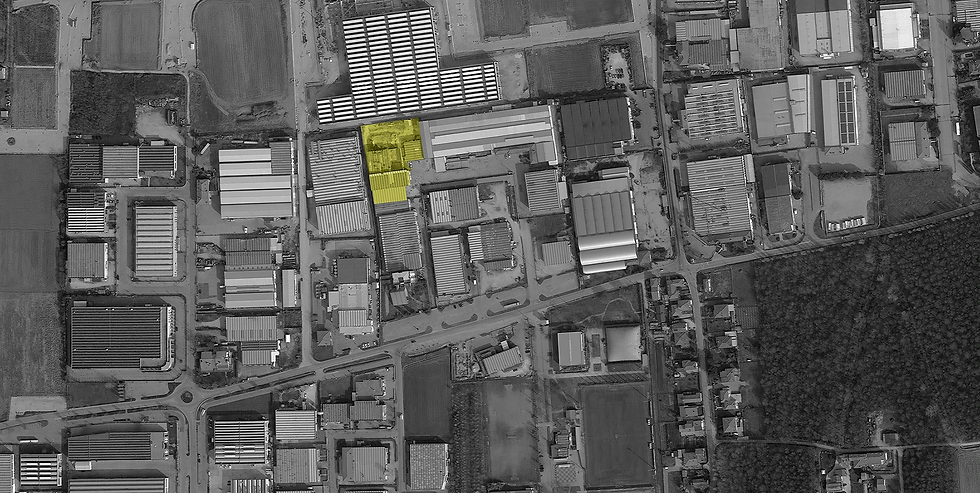L'ORIGINE
English version .2015 .2016 Tezze sul Brenta (VI) .IT
4 x 5 inches colour negatives - Digital photos & film

CARTOGRAPHY
PHOTOGRAPHY





Above: the factory with in the geographical context, hydrogeological maps and the sequence shows how the area was secured after cleaning with a thick, harmed concrete container.





Above: Silvio Bonan is taking a photo of the working spot of his father, who died due to poisoning in this working place.



ORIGIN
the point or place where something begins, arises, or is derived.
From Latin origo, origin-, from oriri ‘to rise’.

RESEARCH













































In 2002 strange mutant flowers started to appear in the garden of a family living near the Tricom / PM Galvanica industry in Tezze sul Brenta. The Tezze area is located in a pre-Alpine hydrogeological belt rich in springs, renowned for the quality of its natural waters; numerous supply wells are spread throughout the territory.
This precious natural wealth, however, has been heavily compromised due to the wicked conduct of Tricom / PM, a galvanic company active in the area from 1974 to 2003 and which, during its thirty years of activity, has constantly spilt its industrial wastewater into the adjacent canals. , on the surrounding land, below its industrial floors.
A long investigation started and uncovered the pollution source detected in Venice's lagune since the late 70's. The factory and its administrators were responsible for one of the most serious cases in the world of hexavalent chromium (Cr6) pollution.
The heavy metals percolated into the soil are many (nickel, cyanides, acids, and lead), but the most lethal is Cr6: from the cores carried out by the Arpav's technicians ( Regional branch of the environmental agency), the presence of an enormous " tablet "of chromium, nickel and other substances that reaches 22-25 meters in height: given that the aquifer whose path passes among other things just below the factory does not maintain a constant height level but rises and falls with an excursion level of up to 5 meters per year this involves the periodic washing away of the tablet with the consequent release of chromium ions in the water which is transported along the entire path of the aquifer towards the south-east in the Padua area.
The penetration of pollutants is, among other things, facilitated by the geological conformation of the area, characterized by the presence of deposits of materials of alluvial origin, mainly gravelly and progressively finer, alternating with sandy levels descending from the mountains towards the plain, which makes the soil particularly permeable to substances with which it comes into contact. To remedy this situation (which has already lasted for a long period of time with enormous damage to the environment and to those who unknowingly drew on contaminated water), a temporary hydraulic barrier was set up, which is activated when the groundwater level rises and excludes the plumes, that is to say, the polluting comes from contact with the aquifer itself.
The final reclamation, on the other hand, involves the chemical treatment through the experimental use of hydrogen gas to downgrade Cr6 into chromium Cr3 and the construction, at a depth of 28-30 meters below the company perimeter, of a permanent reinforced concrete sarcophagus in which the irreversibly contaminated gravel material. For the responsibilities in this regard, Paolo Zampierin, the last owner of the company, was convicted of culpable water poisoning; the same together former partner Adriano Sgarbossa and the former employee and mayor of Tezze Rocco Battistella were convicted of the manslaughter of two (although the suspected deaths are approximately 20) of the former workers who died of lung cancer because of the bad conditions in which the working environment was and the prolonged contact with Cr6.
Now that the factory has been demolished and the area secured, this documentary series wants to last as an important witness of this environmental catastrophe for future generations.
Although they are in Italian, some documents are available for download; feel free to get in touch if you need more data.
Above: a detailed photo of the mutant belly flower realised by the Istituto Agrario di San Michele all'Adige (TN)








If anything, freedom is what you feel when first confronted with the Dutch Flevo polders. Freedom and perhaps a sense of being lost in space. The low horizons, immense skies, and endless perspectives are that of a desert landscape – albeit with a human element.




























